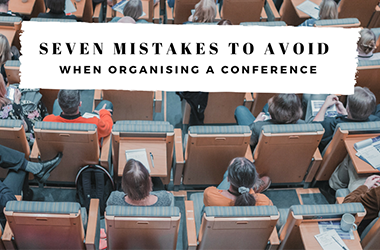All kinds of organizations, no matter how big or small, call for clear and concise presentations during meetings. Businesses run on proposals, contracts, requirements and projects. All these things, to make sure are intact and well-understood, must be reviewed daily within a group of individuals. As a result, someone who is adept at persuasion and is creative enough is what a boss utmostly needs.
If this is already your forte, then for sure you have earned respect and confidence from your boss — that you can deliver tasks sweatless at any given time under the bright sun. But for those whose fluke is on the “for improvement” margin, maybe a little practice and a couple of cheat sheets can place them on the “approved” spot.
A good presentation, to succeed it, must put everything perfectly in it place
Ready the visuals
In any presentation, the first thing that draws the human mind closer to it is the visual aid. If you don’t have it, your ratings will surely fall through the cracks. And no one will patronize you for a perfunctory presentation. Always be prepared with the visuals. A good visual aid is something that’s creative and quickly catches the attention at first glance. You do not have to be too fancy with colors though. Calm ones will usually do the trick. Avoid using backgrounds that hurt the eyes. Try to seek a second eye on your work product.
Even though creativity is a talent that is obviously not inherent with everyone, you can be very resourceful about it. For instance, you can learn the standards of a powerpoint presentation from fonts sizes, to bullets and colors. It is also helpful to prepare a template for all your presentations so you can easily reuse it in the future.
Prepare and rehearse
All excellent presenters aren’t just born. They are made. What made them the way they are is that they are serious about putting things together before facing the audience. Remember the time when your classmate won an oration piece ? This was because she practiced for days. Maybe she was just so good — or maybe she was just prepared ! In any presentation, your queue card is your best friend. In my personal experience, it would look as though I wasn’t serious about the presentation that I just aced, but I was so ready about it back home. Sometimes, it would feel as though I gave a perfect response real time in oral recitations, but the truth is, I already had a whole bunch of keywords in my head before I even started my first sentence. You see, preparation is the key. If you have enough time, repeat on the things you might crack at. Remember that repetition is the key to learning.
Control your voice
In the presentation day, your voice is your medium for getting everyone’s attention. When in online meetings keep your voice a little sweet and polite. Because in internet meetings, your voice is what defines your attitude. It is quite different with face to face meetings, because you might sound a little sarcastic instead of sweet. Keep a cool strong voice, loud and distinct but not too shouty. You don’t want to annoy your audience. Be very clear with your words. It’s ok to mispronounce a word and say it clearly the second time. This is better than going through a long sentence without pausing only to confuse everyone.
Make eye contact
Eye contact is also an important way to reach to your audience. Always discuss in front of the people —you do not want to lose them in the process. Surely, acing presentations all the time requires a lot of practice and experience, but as long as you know the content of your presentation well enough, the last thing you can do is deliver it abruptly. If you have notes with you, avoid sticking your face to it all the time. Instead, get a clear view of the essential keywords, trace them in your memory, and then swiftly look at your audience like you are talking to them naturally. Avoid staring at just one person, be ordinary and move your head around to reach even the very end of the seats.
Watch your body language
Your body is your means to express yourself. Keep yourself faced to the audience while putting vigor on the most important topics. Avoid putting your hands in your pocket and do not follow those nasty habits of holding the ends of your shirt or biting your pen. Instead, use your body to turn to the screen and return to the audience characteristically, chinned up and straight, while moving your hands lightly, but not hysterically. If you see someone nodding, that means that they got your point, you can nod at them too to keep their attention. Just relax and keep your cool to minimize sweating if you do. By all means you must be prepared otherwise your nerve will wrack you first.







 English
English  Français
Français  Nederlands
Nederlands